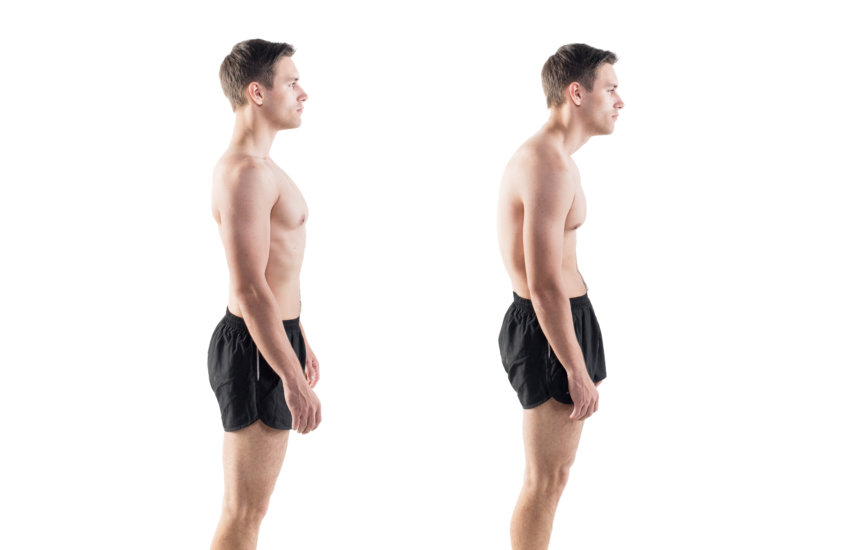Tips to Improve your Posture
Maintaining good form when you are exercising as well as strengthening the right muscles is key to getting results, reducing injury and improving your posture. But what is even more important is being conscious of, and subtly correcting your posture throughout the day.
Here are a few tips to how you can check yourself throughout the day for a good sitting and standing posture. If every day you start to become more aware of your posture and movements it will eventually become second nature and effect how you hold yourself in the future.
Head posture – forward head carriage is really common. An easy way to start to correct this is to imagine a string attached to the crown of your head and that someone is holding the string and drawing it upwards. Try to lengthen yourself out and pull the head back slightly. We sit at a computer and look at a cell phone far to often, when doing either of these things have the screen at eye level as much as possible to prevent yourself from slumping or looking down. Remember the head weighs approximately 6kg, so the more weight you have suspended forward the harder the poor neck and back muscles must work to support it. Being conscious of how you hold your head can help to alleviate the tight achy shoulders and back you get from holding yourself incorrectly.
Shoulders/Chest – set your shoulders by drawing them back slightly and opening up your chest. Then breath laterally into your rib cage, in through your nose and out through your mouth (take a few deep breaths and notice how this position lets you take a fuller breath and releases tension).
 Hips – when seated, think about evenly sitting on your sit bones (ischial tuberosity – the part of the pelvic girdle that supports us when we sit). If you have a hard time feeling them, rock your pelvis under to flatten your back and then rock your pelvis back to create an arch in your lower back, the bones you feel as you go from one position to the other are what you are looking for.
Hips – when seated, think about evenly sitting on your sit bones (ischial tuberosity – the part of the pelvic girdle that supports us when we sit). If you have a hard time feeling them, rock your pelvis under to flatten your back and then rock your pelvis back to create an arch in your lower back, the bones you feel as you go from one position to the other are what you are looking for.
Knees – when standing think soft knees. Not locked (hyper-extended) or bent (flexed). Just soft so that the knee-joint is not loaded by your body weight and not bent so that your quads are doing unnecessary extra work. This will also help support the joints and take some of the load off the lower back and prevent you from over arching your lower back when you stand.
Feet – stand with 60% 0f your weight through your heels and 40% of your weight evenly across your forefoot. While seated have both feet placed flat on the floor (rather than cross legged). Notice if your feet are turned out or turned in and try to keep a neutral gait.
The above points are a good way to think about your posture from head to toe. To summarise stand tall with a string at the top of the head, shoulders back, soft knees and neutral feet. If you are not sure on how to implement some of these things check with your personal trainer and they will be able to show you the correct posture you should be aiming for.
Over time it will all become second nature and eventually it will not feel like a chore. But getting into the habit of doing a self-check of your body throughout the day will improve the way you sit, stand, and move.
Contact us for a Postural and Muscle Imbalance assessment if you haven’t had one already or talk to your trainer if you have any questions. Happy pain-free sitting and standing.

